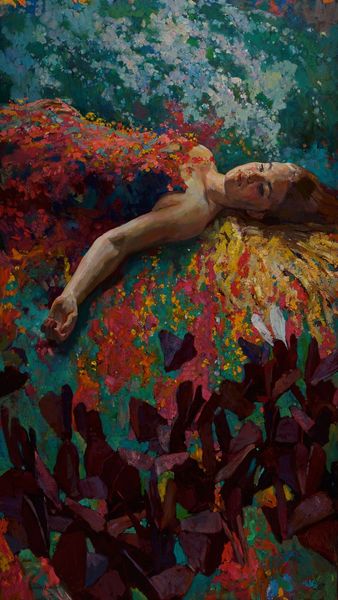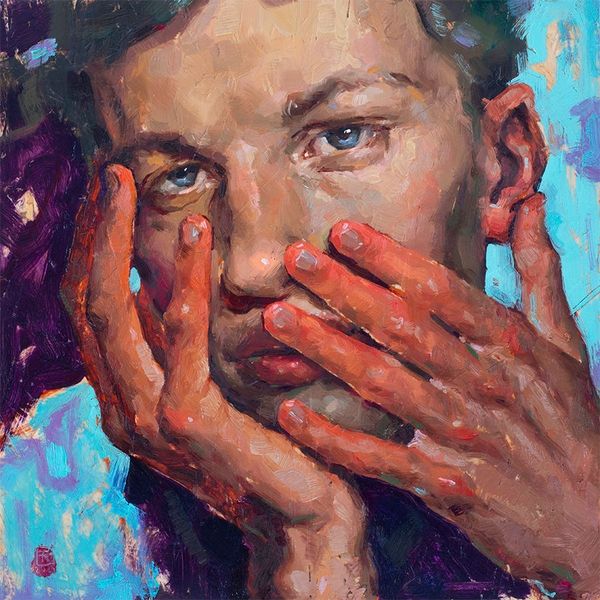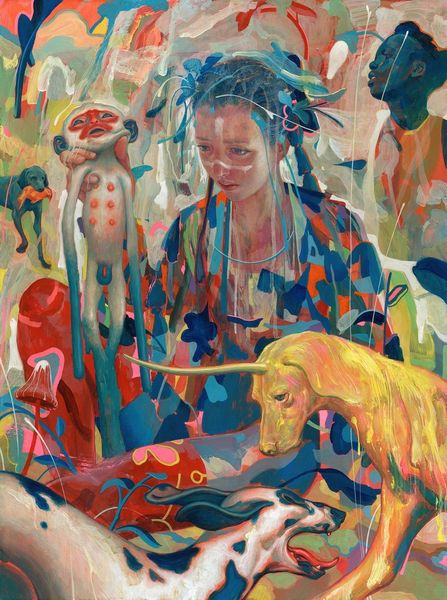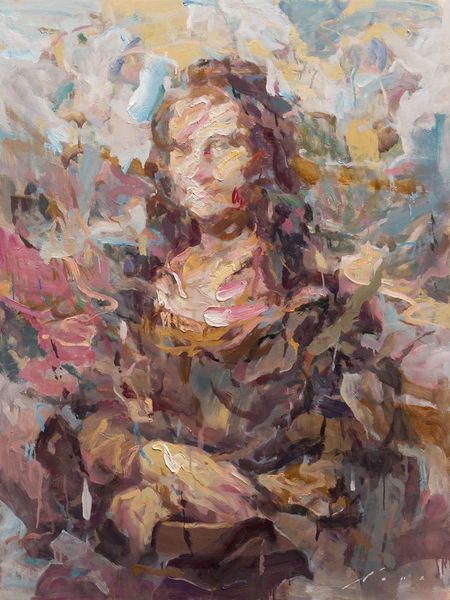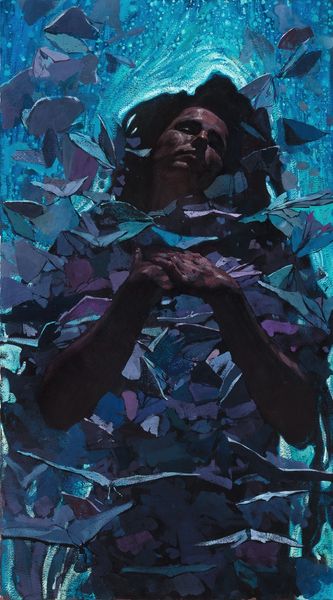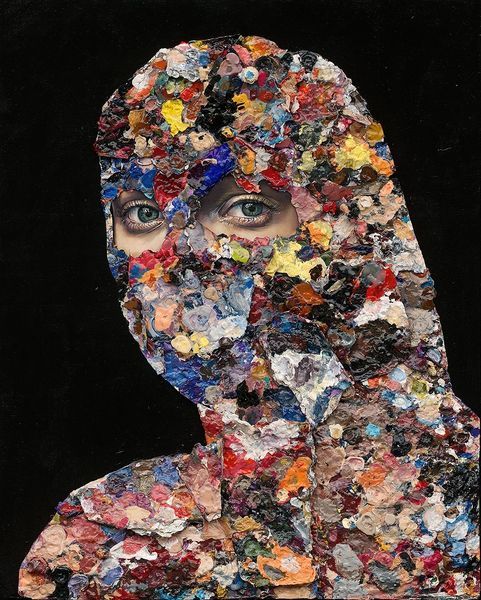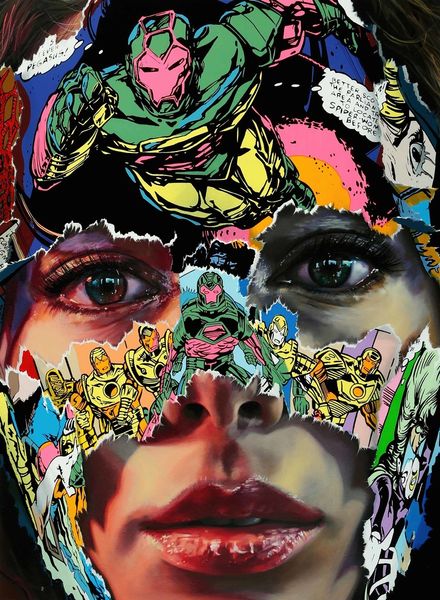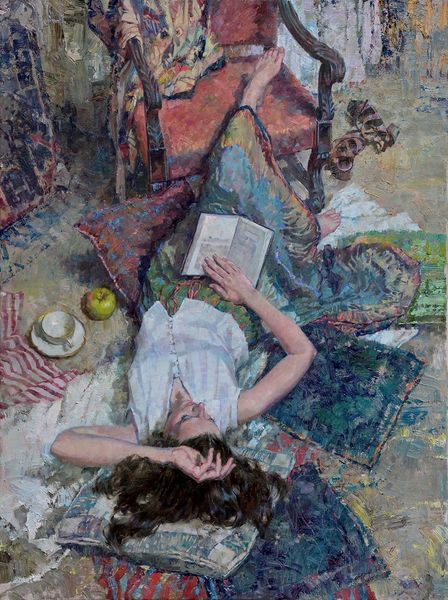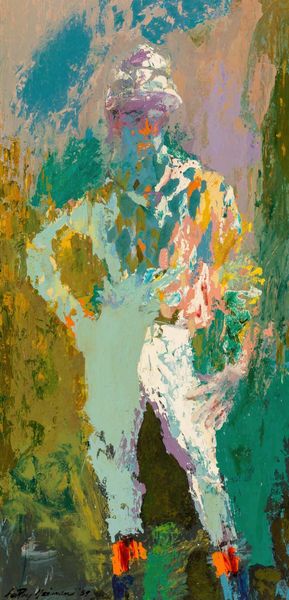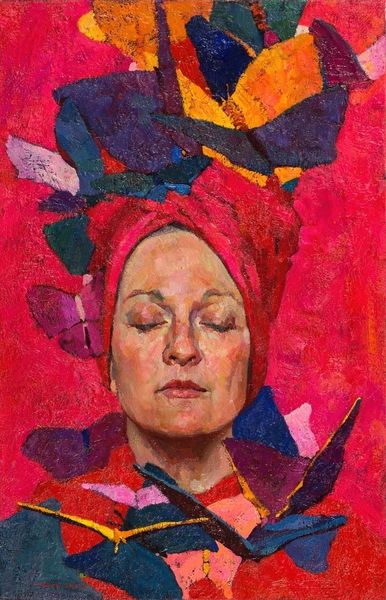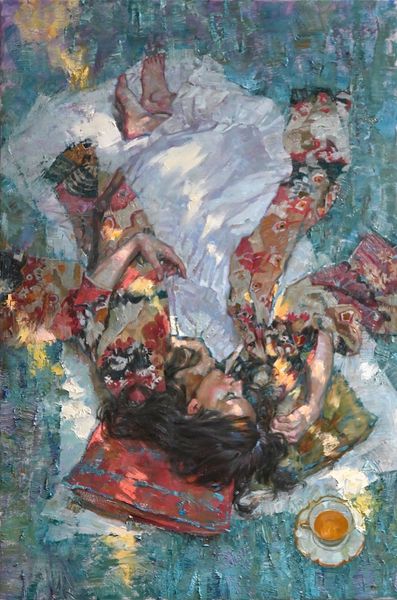
mixed-media, oil-paint, impasto
#
portrait
#
figurative
#
abstract expressionism
#
mixed-media
#
oil-paint
#
figuration
#
oil painting
#
impasto
#
expressionism
Copyright: Modern Artists: Artvee
Curator: Welcome. We're looking at "Chrysalis" by Timur Akhriev. It appears to be a mixed-media work, dominated by oil paint and what looks like impasto application. What are your initial impressions? Editor: Visually arresting. The juxtaposition of the realistically rendered face against the almost violently abstract background—or is it foreground?—creates a powerful tension. It's as if the figure is simultaneously emerging from and being consumed by… chaos? Curator: Yes, I think that tension is key. Akhriev is dealing with figuration, but pushing it to the brink of abstraction. We see this push and pull happening in a lot of portraiture concerned with questions of identity, the pressures of society, perhaps, obscuring the individual. Editor: I'm struck by how the brushstrokes, particularly around the face, almost sculpt the form. The thick, textured application of the oil is remarkable. It certainly gives the portrait a tangible weight, grounding it against the wild colors surrounding it. I wonder what this says of self. Curator: The artist, although his exact dates are somewhat hazy, was certainly influenced by the Expressionists. This painting feels of a piece with that tradition, which, after the world wars, became increasingly interested in conveying interior emotional states, often through distorted forms. It's interesting how the “frame” has entered the plane of the subject. Editor: Distorted forms, absolutely, but I wouldn't discount the deliberate arrangement of color. Look at how the blues and purples around the face draw our eye into it. The impasto, then, almost traps the face, holding it. Do you agree the painting draws inspiration from Abstract Expressionism? The movement influenced artists to focus on the process of creation as much as the final product. I believe we see that here. Curator: Certainly. And think of Abstract Expressionism’s links with the psychoanalytic theories of figures like Jung—the idea that abstraction could give us access to universal, shared experiences, the collective unconscious. Akhriev seems interested in pushing and pulling at similar boundaries, using the expressive qualities of paint itself. Editor: It leaves me pondering the power of paint and brush, color and form, the tools Akhriev masterfully utilized in inviting the beholder to consider, if only momentarily, the nature of self, nature and existence. Curator: A fitting conclusion. Akhriev encourages us to reflect on the complex relationship between external appearance and the tumultuous inner life, an exercise as socially relevant today as it ever was.
Comments
No comments
Be the first to comment and join the conversation on the ultimate creative platform.
